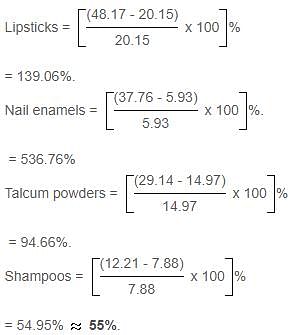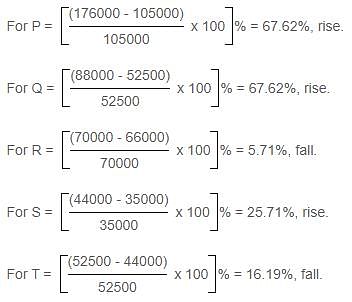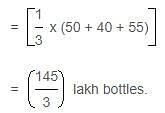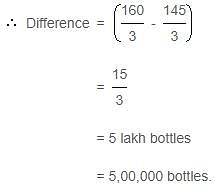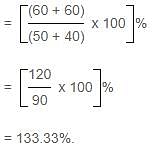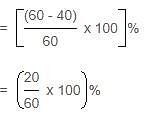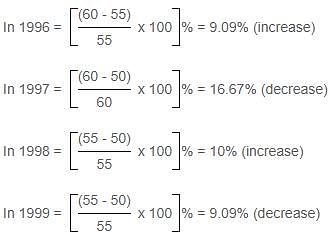MCQ: Bar Charts - 1 - SSC CGL MCQ
15 Questions MCQ Test Quantitative Aptitude for SSC CGL - MCQ: Bar Charts - 1
Direction: A cosmetic company provides five different products. The sales of these five products (in lakh number of packs) during 1995 and 2000 are shown in the following bar graph.
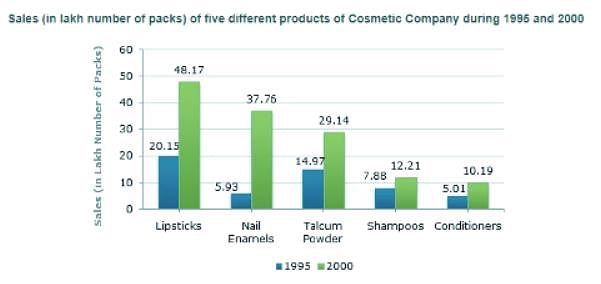
Q. What is the approximate ratio of the sales of nail enamels in 2000 to the sales of Talcum powders in 1995?

Direction: A cosmetic company provides five different products. The sales of these five products (in lakh number of packs) during 1995 and 2000 are shown in the following bar graph.
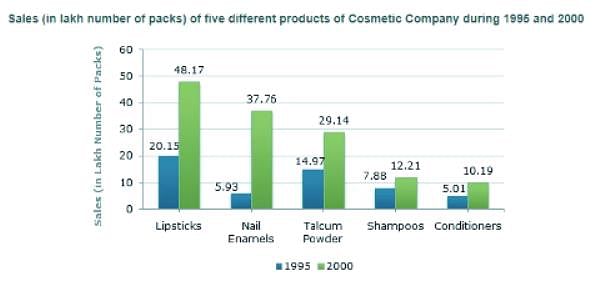
Q. The sales of conditioners in 1995 was by what percent less than the sales of shampoos in 1995? (rounded off to nearest integer)

| 1 Crore+ students have signed up on EduRev. Have you? Download the App |
Direction: A cosmetic company provides five different products. The sales of these five products (in lakh number of packs) during 1995 and 2000 are shown in the following bar graph.

Q. During the period 1995-2000, the minimum rate of increase in sales is in the case of?

Direction: A cosmetic company provides five different products. The sales of these five products (in lakh number of packs) during 1995 and 2000 are shown in the following bar graph.

Q. The sales of lipsticks in 2000 was by what percent more than the sales of nail enamels in 2000? (rounded off to nearest integer)
Direction: A cosmetic company provides five different products. The sales of these five products (in lakh number of packs) during 1995 and 2000 are shown in the following bar graph.

Q. The sales have increase by nearly 55% from 1995 to 2000 in the case of?
Direction: The bar graph given below shows the percentage distribution of the total production of a car manufacturing company into various models over two years. Study the graph carefully and answer the questions that follow.
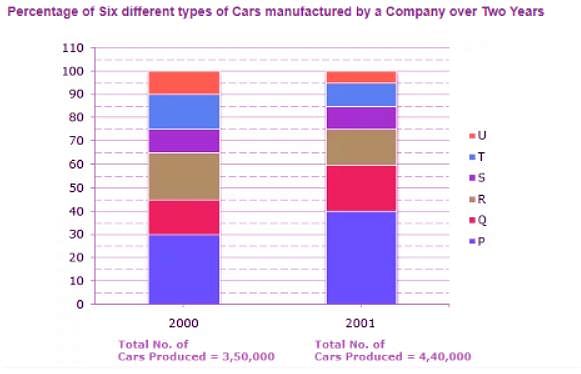
Q. What was the difference in the number of Q type cars produced in 2000 and that produced in 2001?
Direction: The bar graph given below shows the percentage distribution of the total production of a car manufacturing company into various models over two years. Study the graph carefully and answer the questions that follow.
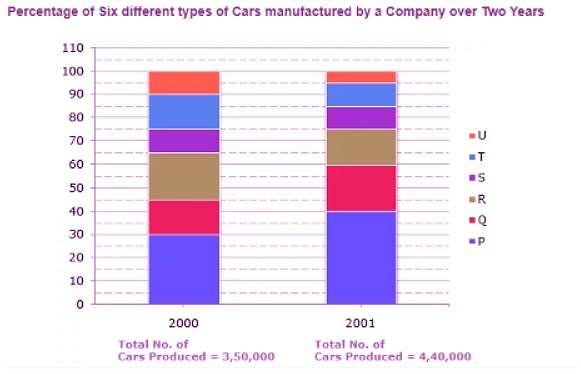
Q. If the percentage production of P type cars in 2001 was the same as that in 2000, then the number of P type cars produced in 2001 would have been?
Direction: The bar graph given below shows the percentage distribution of the total production of a car manufacturing company into various models over two years. Study the graph carefully and answer the questions that follow.

Q. If 85% of the S type cars produced in each year were sold by the company, how many S type cars remain unsold?
Direction: The bar graph given below shows the percentage distribution of the total production of a car manufacturing company into various models over two years. Study the graph carefully and answer the questions that follow.

Q. For which model the percentage rise/fall in production from 2000 to 2001 was minimum?
Direction: The bar graph given below shows the percentage distribution of the total production of a car manufacturing company into various models over two years. Study the graph carefully and answer the questions that follow.
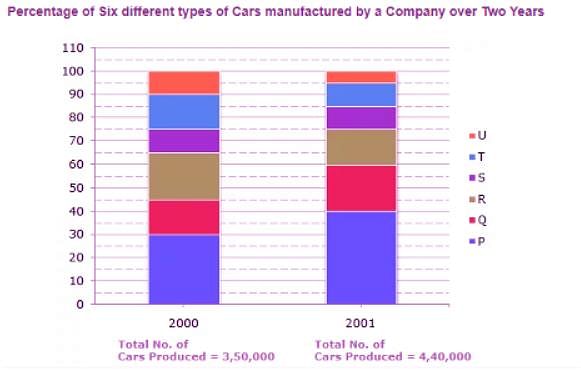
Q. Total number of cars of models P, Q and T manufactured in 2000 is?
Direction: A soft drink company prepares drinks of three different flavours - X, Y and Z. The production of three flavours over a period of six years has been expressed in the bar graph provided below. Study the graph and answer the questions based on it.
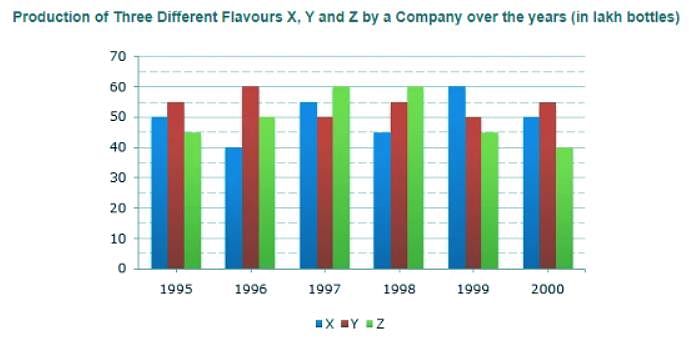
Q. What is the difference between the average production of flavour X in 1995, 1996 and 1997 and the average production of flavour Y in 1998, 1999 and 2000?
Direction: A soft drink company prepares drinks of three different flavours - X, Y and Z. The production of three flavours over a period of six years has been expressed in the bar graph provided below. Study the graph and answer the questions based on it.
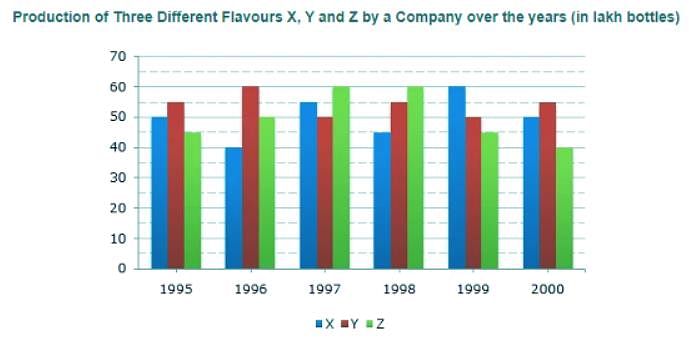
Q. The total production of flavour Z in 1997 and 1998 is what percentage of the total production of flavour X in 1995 and 1996?
Direction: A soft drink company prepares drinks of three different flavours - X, Y and Z. The production of three flavours over a period of six years has been expressed in the bar graph provided below. Study the graph and answer the questions based on it.
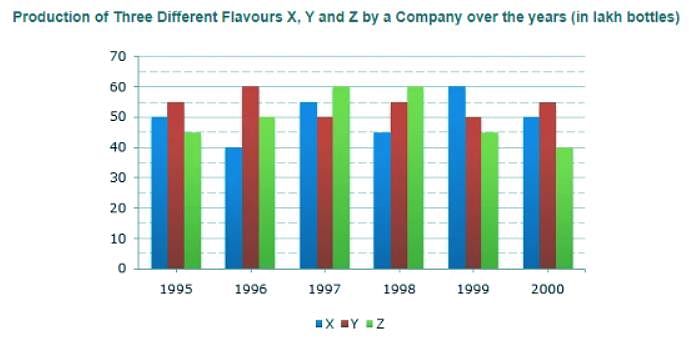
Q. What was the approximate decline in the production of flavour Z in 2000 as compared to the production in 1998?
Direction: A soft drink company prepares drinks of three different flavours - X, Y and Z. The production of three flavours over a period of six years has been expressed in the bar graph provided below. Study the graph and answer the questions based on it.
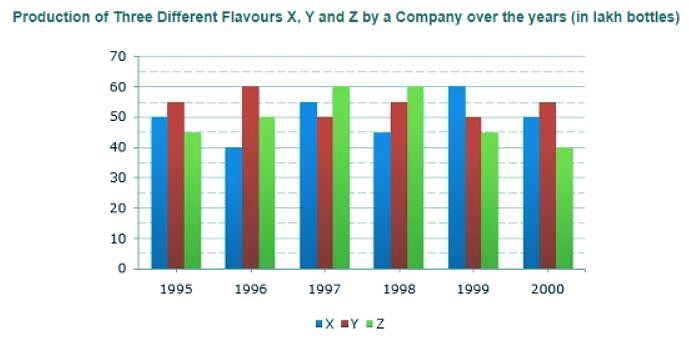
Q. For which flavour was the average annual production maximum in the given period?
Direction: A soft drink company prepares drinks of three different flavours - X, Y and Z. The production of three flavours over a period of six years has been expressed in the bar graph provided below. Study the graph and answer the questions based on it.
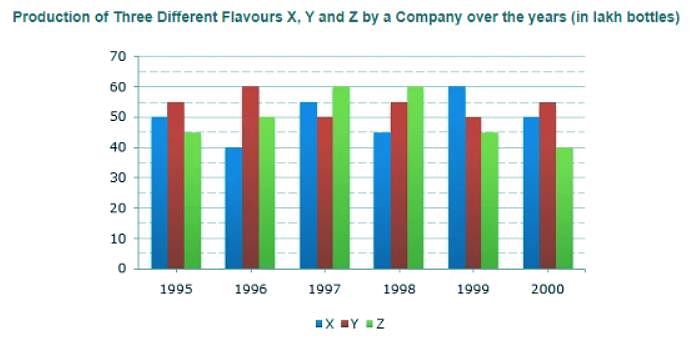
Q. For which of the following years the percentage of rise/fall in production from the previous year is the maximum for the flavour Y?
|
314 videos|170 docs|185 tests
|
|
314 videos|170 docs|185 tests
|






